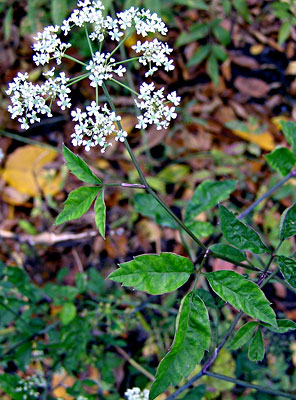 |
| Water hemlock, Cicuta maculata |
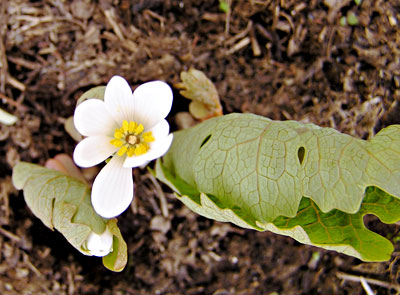 |
| Bloodroot, Sanguinaria canadensis |
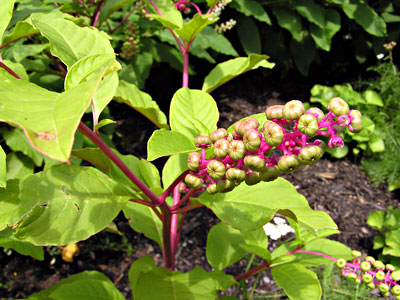 |
| Pokeweed, Phytolacca americana |
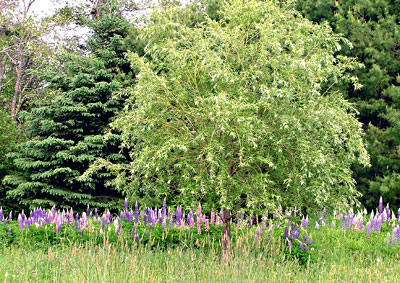 |
| Lupines, Lupinus spp. |
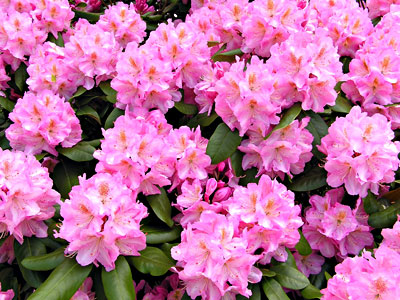 |
| Rhododendron spp. |
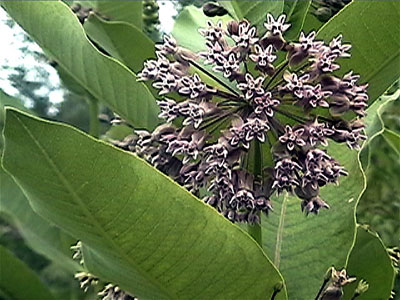 |
| Milkweed, Asclepias syriaca |
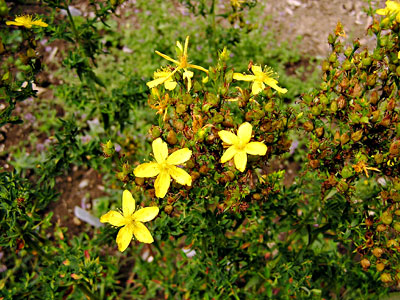 |
| St. Johnswort, Hypericum perforatum |
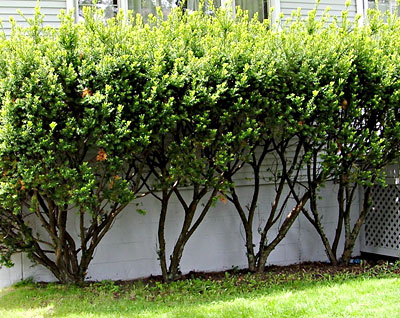 |
| Yews, Taxus spp. |
By Diane Schivera, M.A.T.
Jean English photos
If a pasture has enough palatable plants to eat, livestock will generally avoid the poisonous plants. But livestock are individuals, and there are always exceptions. So any pasture management method that results in over grazing will encourage animals to eat plants they would normally avoid.
Drought can also lead to poisonings, because the toxins become more concentrated in plants.
The animals’ health and condition will affect the potency and effects of certain toxins. Many pasture plants that are not normally toxic can accumulate nitrates under certain conditions. A healthy animal will process this toxin without ill effects, while a thin or unhealthy animal could have a serious reaction or even die.
The quantity of the plant eaten will also affect the severity of the result.
And the part of the plant eaten is significant. Rhubarb (Rheum rhabarbarum) leaves are toxic but the stalk is not. Dogbane (Apocynum androsaemifolium) tubers are poisonous, but the aboveground portion is not. If animals eat only the tops and don’t dig or pull up the tubers, they won’t be affected – so again, regarding pasture management, don’t push animals to eat plants they would prefer not to, but may eat only because they are hungry and have been in that paddock too long.
The stage of growth or form in which it is eaten can affect the toxicity of some plants. Sweet clovers (Melilotus spp.) are fine eaten in pasture but if put up in hay, animals eating that hay can suffer late-term abortions.
Many ornamental plants can cause illness or death when eaten by any animal. Take extra care not to throw cuttings of these into the pasture, and avoid planting exotics or ornamentals along the fence if animals have any chance of reaching through the fence to nibble.
Common toxins found in poisonous plants are alkaloids, nitrates, glycosides and cynaogenic toxins (producing hydrogen cyanide, also called Prussic acid).
If you suspect poisoning, try to find the offending plant in order to decide how to treat the animal.
Walk your pastures each season when livestock are out. New plants can grow any time, from seeds carried by wind or other vectors. Learn to identify the plants in your pastures.
Common Poisonous Plants
Prunus species include cherry and other stone fruit trees. Fresh, dry leaves are edible, but if the leaves become wilted for any reason, even from frost, they will cause cyanide poisoning and sudden death.
Red maple (Acer rubrum) leaves, wilted or frosted, are toxic to equines only.
Water hemlock (Cicuta maculata) and poison hemlock (Conium maculatum) are problematic because they green up early in the spring and look very inviting if no other green vegetation is available. Later in the season most animals avoid these.
Other plants that cause alkaloid poisoning are Mayapple (Podophyllum peltatum), bloodroot (Sanguinaria canadensis), pokeweed (Phytolacca americana), false hellebore (Veratrum woodii), Jimson weed (Datura stramonium) and lupines (Lupinus spp.).
Rhododendrons (Rhododendron spp.), mountain laurel (Kalmia latifolia) and sheep laurel (K. angustifolia) cause weakness, nausea, salivation and vomiting.
All parts of nightshades (Solanum spp.), including bittersweet nightshade (Solanum dulcamar), are toxic, except for ripe berries. The toxins include solanine, an alkaloidal glycoside; other glycosides; and atropine. They affect the gastric and nervous systems when eaten, either fresh, or dried in hay.
White sweetclover (Melilotus alba) and yellow sweetclover (M. officinalis) may contain toxins when present in moldy hay and when fresh plants are stressed.
Older varieties of Sudan grass (Sorghum sudanense) or sorghum (S. bicolor), when wilted or frosted, cause cyanogenic (cyanic generating) poisoning. Silage should be at least two weeks old to be safe.
Bracken fern (Pteridium aquilinum) is toxic if consumed over several weeks. Affected animals are listless, lose weight and can have small hemorrhages on their mucous membranes. They may die from internal hemorrhages or from anemia.
The buttercup (Ranunculus spp.) toxin is an acrid, volatile alkaloid that can cause skin to blister and can inflame the intestinal tract. Cattle and goats poisoned by buttercups produce bitter milk with a reddish color. The toxin volatilizes and is lost when dried in hay.
Milkweed (Asclepias syriaca) contains cardiac glycosides and has low to moderate toxicity. Milkweeds are unpalatable, and death is unlikely unless large quantities are consumed. For animals that can do so, vomiting – the first sign of poisoning – eliminates some of the toxin. (Ruminants and horses cannot vomit.)
Lambsquarters (Chenopodium album) can accumulate nitrates, which can be present in fresh or dried plant matter. The toxicity depends on nitrogen levels in the soil and resulting nitrate levels in the plant.
Redroot pigweed (Amaranthus retroflexus) contains nephrotoxin, which causes kidney failure; soluble oxalates; and can accumulate nitrates. Large quantities must be eaten, fresh or in hay, to cause a problem.
Curly (yellow) dock (Rumex crispus) contain soluble oxalates that affect the kidneys if eaten in large quantities.
Tall fescue (Festuca arundinacea) contains endophytes (a fungus that lives within the plant) that have low to moderate toxicity to livestock, producing intestinal and reproductive problems. Tall fescue is sometimes seen in roadside plantings and spreads from there to fields. Endophyte-free varieties are available for planting in pastures.
St. Johnswort (Hypericum perforatum) photosensitizes skin, so animals – especially white goats – can get sunburned. Alsike clover (Trifolium hybridum) and some other legumes, as well as buckwheat (Fagopyrum esculentum), can also cause this problem. Animals can become photosensitized just from contacting wet plants.
Wild and cultivated mustards, in the Cruciferae family, contain irritating oils that can cause oral and digestive problems when consumed in large quantities, fresh or dried. They can also accumulate nitrates in soils with abundant nitrogen.
Yews (Taxus spp.) contain highly toxic cardiac alkaloids in all parts except the fleshy red berries. Eating a very small amount can kill an animal.
Resources
Plants Poisonous to Livestock, Cornell University Department of Animal Science
www.ansci.cornell.edu/plants/index.html
Plant Poisoning of Livestock in Vermont, University of Vermont Extension
www.uvm.edu/pss/vtcrops/articles/VTPoisonousPlants.pdf
Canadian Poisonous Plants, Canadian Biodiversity Information Facility, Government of Canada
www.cbif.gc.ca/pls/pp/poison?p_x=pxpoisworld.html
About the author: Diane Schivera was MOFGA’s organic livestock specialist for many years.

